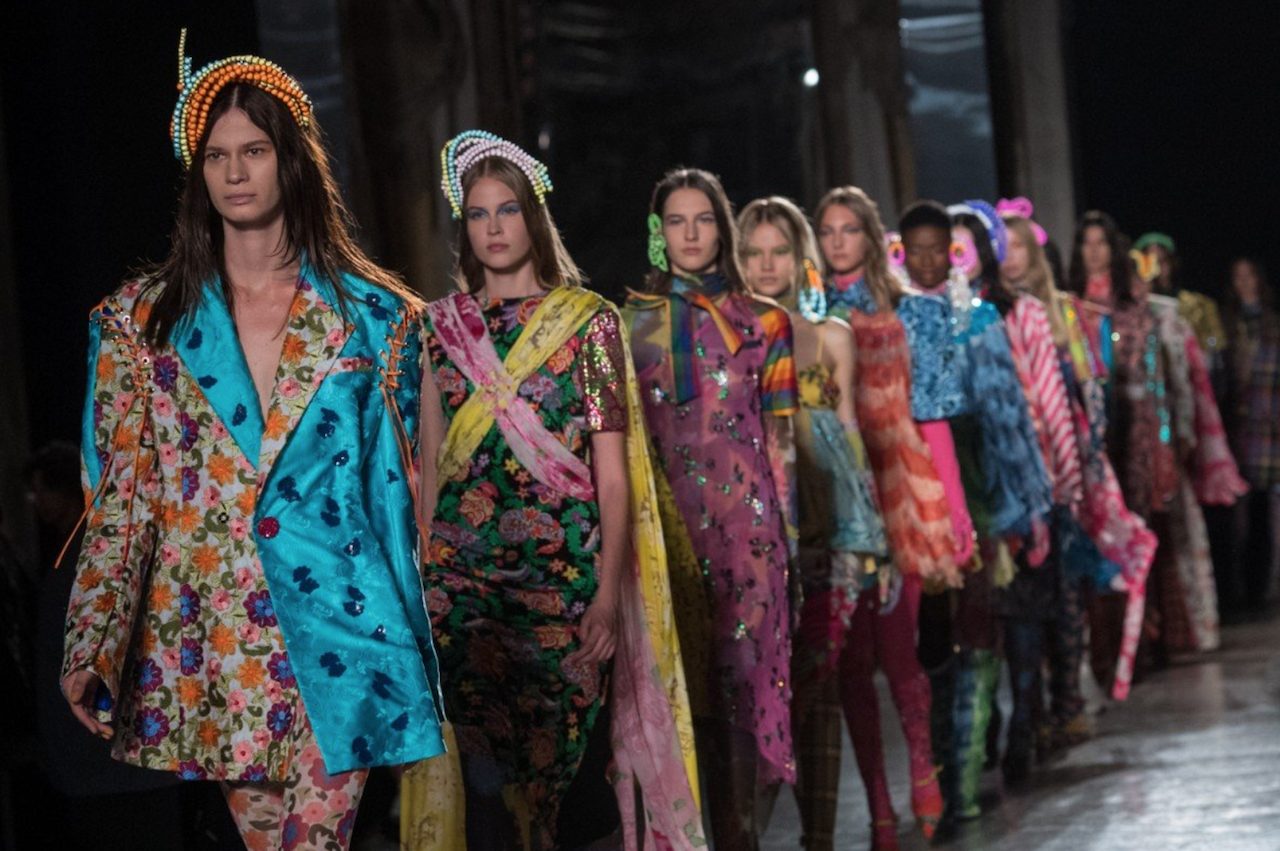When searching “Märchen dress” in Taobao, the top-selling items aren’t the authentic dress that sells for nearly 5000 RMB by the four-year-old Chinese emerging brand of the same name, but numerous counterfeit versions that sell for less than 600 RMB. This circumstance isn’t new, but in the past, counterfeiters had their sights trained on best-selling items from giant, international fashion houses — not young designers just starting out in the business.
Back then, emerging independent Chinese designers really only got buzz within very sophisticated Chinese circles, but today, the situation has changed. Young Chinese designer brands are now gaining greater exposure, thanks to fashion boutiques, influencers, and counterfeit manufacturers on social media and e-commerce sites. But more importantly, the time for Chinese independent designers has finally arrived, and Chinese consumers are eager to own the freshest designs on the market.
Chinese independent designers are now benefiting from this huge domestic market, but they also face steep competition from overseas designer brands and Taobao. Since Chinese consumers use all of these sources to dress up today, what do independent Chinese designer brands need to know about these consumers to remain popular with them?
Chinese consumers want ‘niche’ from independent Chinese designers#
Mckinsey defines “niche” as an item that exhibits a unique design that’s rarely seen on the street, and today, Chinese designer brands are benefiting both by diverging from mainstream designs and by limiting access in China, unlike Western name brands. And just as wealthy Chinese consumers had previously used foreign niche brands to gain social capital and exhibit individuality, today, Chinese consumers are using the niche qualities of independent Chinese designer brands to show off their taste and sophistication.
Some consumers show sophistication by checking-in at Chinese social-media-worthy fashion boutiques like LABELHOOD, the leading emerging fashion designer retailer in China. “LABELHOOD’s store in Shanghai used to be a tourist attraction during Shanghai Fashion Week,” the founder of LABELHOOD, Tasha Liu, says. “Recently, as we opened our new locations in Nanjing and Guangzhou, we found out through Little Red Book that a lot of consumers have already spontaneously checked in at our new locations before the grand opening.” The consumer shift in perception about niche brands is what’s giving veteran Chinese fashion boutiques like LABELHOOD cachet.
While consumers' pursuit of these emerging Chinese designers boosts their recognition, the foreign niche brands that many independent Chinese boutiques carry alongside these emerging designers help to validate them. “Chinese consumers are becoming more and more clear about their style and are taking a stand on what they wear,” Tasha adds. “For them, Chinese independent designers and foreign designer brands are complementary. They are treating these brands equally.” This positioning further builds up the impression of “nicheness” for independent Chinese designer brands among Chinese consumers.
Independent Chinese brands benefit from a local demand for#
signature styles#
Success for independent Chinese designers in their local market is unique because the entire brand doesn’t often become famous as a whole. Rather, one of the brand’s products quickly becomes celebrated by consumers, almost in a viral way.
The Chinese celebrity effect (“同款效应”), where products become sought-after once they’ve been worn publicly by celebrities, plays a significant role in bringing Chinese designer brands into the public eye. Most consumers first get acquainted with these brands once they’re worn by celebrities like Nana Ouyang, who reportedly holds the most influence in driving sales with Chinese Gen-Z consumers. A counterfeit of one of Märchen hottest skirts on Taobao even got multiple mentions on the site as being “Nana Ouyang’s choice.” But a single product’s stratospheric launch from a celebrity effect does boost the brand’s name by excessively spreading it across all social media platforms in a short amount of time.
But meanwhile, sophisticated consumers are also contributing to this scene by acquiring independent Chinese designer brands for social capital, linking independent Chinese designer brands with popular niche brands. Just as in the past, a pair of Tabi boots by Maison Margiela — the niche-turned-popular brand beloved by sophisticated Chinese – spoke volumes about a consumer’s taste, so too does wearing the hottest Shushu/Tong flower top or Marchen veil skirt in today’s Chinese fashion market. “Chinese consumers are willing to purchase the hottest piece of the season,” Tasha explains, “in fact, they are eager to become the first one to wear the hottest piece from the hottest brand today.” Recognizable products from a cool but niche brand today add value to a person’s social capital as a new form of knowledge, and a hot item from a Chinese designer brand plays into this positioning.
Ultimately, an independent Chinese designer brand’s path is never a solo effort. It’s one that combines multiple forces — from boutiques and media to KOLs and KOCs — and is still usually discovered offline. “In fact, we found out that a lot of KOLs are our customers,” Tasha says. “Our boutique manager and sales associates are like the KOLs’ KOL, helping them find the items they want to promote.” As KOLs and KOCs start to share info on emerging brands, those brands get circulated among their loyal followers and eventually throughout Chinese social media, further building brand recognition.
For truly sophisticated and well-financed consumers, designer brands co-exist with Taobao brands#
Less anticipated is the symbiosis of designer brand products and Taobao merchandise among sophisticated Chinese consumers who enjoy Chinese designer brands and mixing Taobao brands with them. “Foreign designer brands, for me, are more about statement pieces,” Tang says, “while Taobao brands offer affordable prices with trendy cuts and decent materials. Independent Chinese designer brands often reference or copy foreign designer brands but provide a wider range of options in color and cuts that fit Chinese and are perfect for daily mix and match.” Sophisticated Chinese consumers shop from all types of brands, but each provides a different function in the consumer’s wardrobe.
Where does this leave independent Chinese designer brands?#
But ultimately, many of today’s independent Chinese designer brands are perhaps trying to grow too big too quickly. Rising brands like Märchen and Renli Su are now being criticized by once-loyal customers for raising their prices at an unreasonable rate and offering less-than-satisfactory customer service. As Chinese consumers gain more knowledge about these brands from social media and local boutiques — and as independent brands start facing more competition from each other — one must wonder how independent Chinese designer brands can justify steep prices for a barely-established brand name without also losing their “niche” and “cool” image. But more importantly, can these brands afford to lose their once-loyal customers who invested in them before they became famous?

